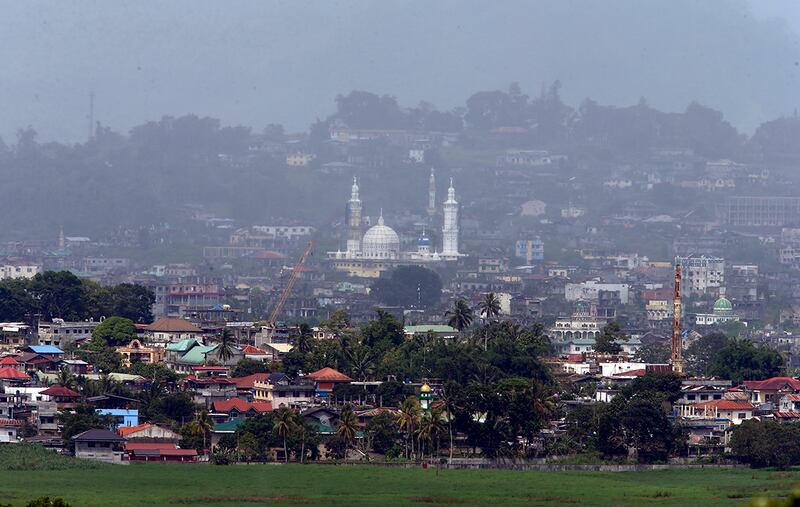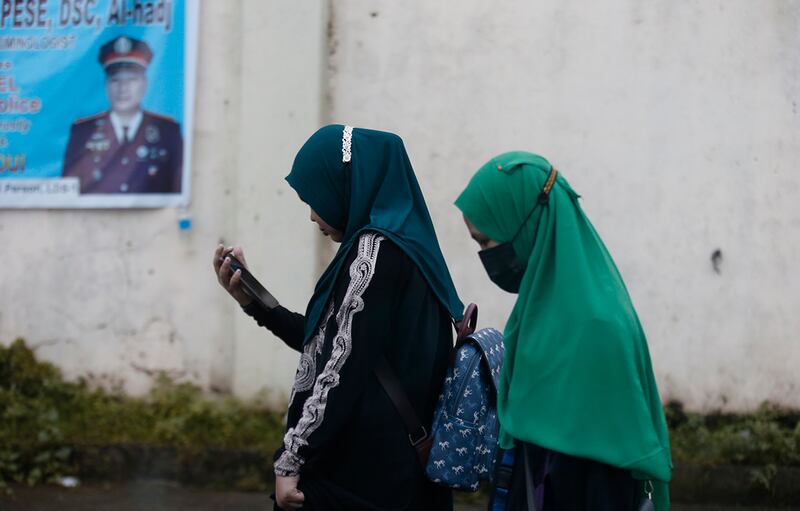The rectangular white stones that dot the Maqbara public cemetery in a desolate part of Marawi mark the graves of 466 people who were killed during a five-month siege of this southern Philippine city by pro-Islamic State militants in 2017.
There are no names on the markers – only numbers that signify the dates for when the bodies were buried. Out of the 470 people who are buried here, only four have been identified in the years since the siege ended, officials say.
“In this site are the marked graves of those who have fallen victim during the Marawi Siege (May 23 to October 17, 2017) and yet to be identified and named,” reads a memorial plaque at the cemetery. “We remember, we never forget!”
Forensics experts have had difficulty matching names to the bodies of the 466 because their relatives are afraid to come forward while the security situation in the area remains precarious, sources told BenarNews.
According to police, the bodies of only four people who are interred at the cemetery were identified by relatives who came to the crime laboratory in nearby Cagayan de Oro city to provide samples of their DNA.
A general fear of being seen as sympathetic to the Islamic State-linked fighters who seized Marawi on May 23, 2017, is among factors that have dissuaded civilians here, whose loved ones remain missing four years later, from coming forward to provide DNA, said a humanitarian aid group operating in the area.
Many are also wary of being erroneously named as “Maute militants” – one of the groups that carried out the siege – the International Committee of the Red Cross (ICRC) said.
“There is still a lot of hesitation for the families to come out. Even we are finding it hard to convince them,” Elvis Dzanic, ICRC delegate for the families of those still missing, told an online forum of journalists at the weekend.
Dzanic said it had been a slow process before some of the families had agreed to meet with the ICRC team assisting them.
Families of the missing were still grappling with the psychological pain even as they also have to contend with their economic and legal needs, the ICRC said.
“Many have lost their breadwinners and face legal and administrative gaps that limit their access to social benefits and pensions,” the ICRC said in a statement issued Saturday.
The NGO said it had found out that the top priority for families in the Marawi area was “to clarify the fate and whereabouts of their loved ones, followed by financial aid, and addressing the psychosocial challenges they face in dealing with [their] absence.”

Drieza Liningding, chairman of the Moro Consensus Group, said different tallies among government agencies about the death toll from the Marawi siege had added to the problem.
“At the start of fighting, the Lanao del Sur provincial government tagged the [death toll] as high as 3,000. The Department of Local Interior and Local Government had a different figure,” Liningding said. “It’s very confusing.”
The Moro Consensus Group, a community-based NGO and association of young professionals, academics and activists, been lobbying the central government in Manila to rehabilitate Marawi. The once picturesque lakeside city was largely destroyed during a five-month battle between government forces and the militants in 2017.
In the end, the government settled on an official death toll of 1,200 government troops, militants and civilians. This figure is generally accepted to include the 470 buried at the Maqbara cemetery.
The battle started in May 2017, when the Islamic State’s regional Filipino leader Isnilon Hapilon led hundreds of militants from Southeast Asia and the Middle East in taking over Marawi.
The original plan was for IS to establish Marawi as its caliphate in Southeast Asia. But the military and police, after initially being overwhelmed, eventually won a running urban gunbattle.
Intelligence support from Philippine allies the United States and Australia tipped the war in the government’s favor, and the militants were finally forced out of the city in October of that year.
Some of the militants, however, escaped from Marawi, and are known to be recruiting young Muslims in remote areas of the south, military and police intelligence say.

President Rodrigo Duterte, whose six-year term ends next year, has promised to completely rebuild Marawi by the time he steps down. But while improvements have been made since, more than 17,000 residents of the city remain displaced.
“The president’s promise is that Marawi would rise again,” Duterte spokesman Harry Roque told an online news conference on Monday. “And I think the target can be met that Marawi will be completely rebuilt at the end of the term of the president.”
Questions have abounded about efforts to reconstruct Marawi and the relatively small budget allotted to this endeavor. The government’s budget department has earmarked just 17 billion pesos (U.S. $354 million) for the city’s restoration, far below the 60 billion pesos ($1.2 billion) that officials had earlier said was needed to fully rehabilitate Marawi.
